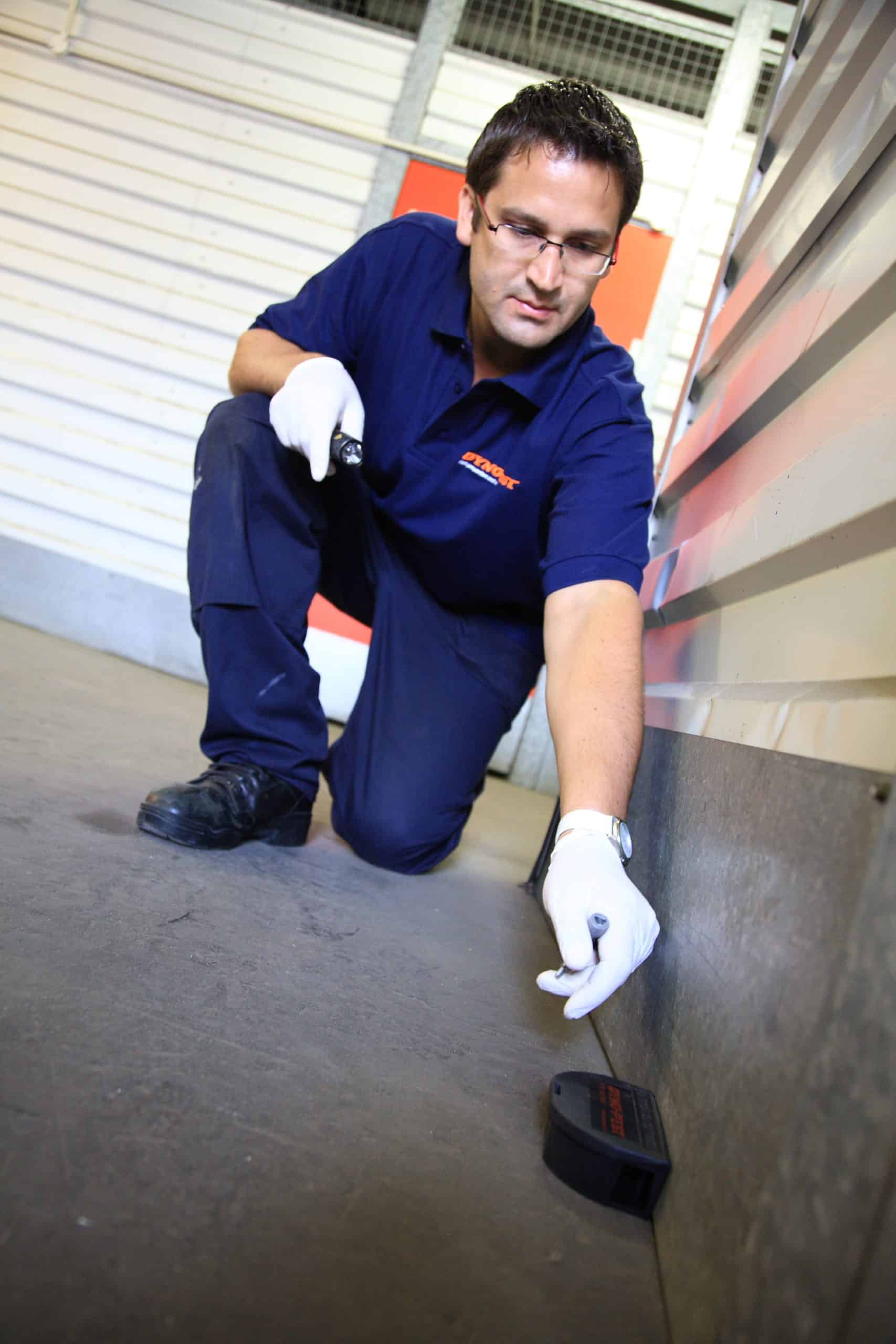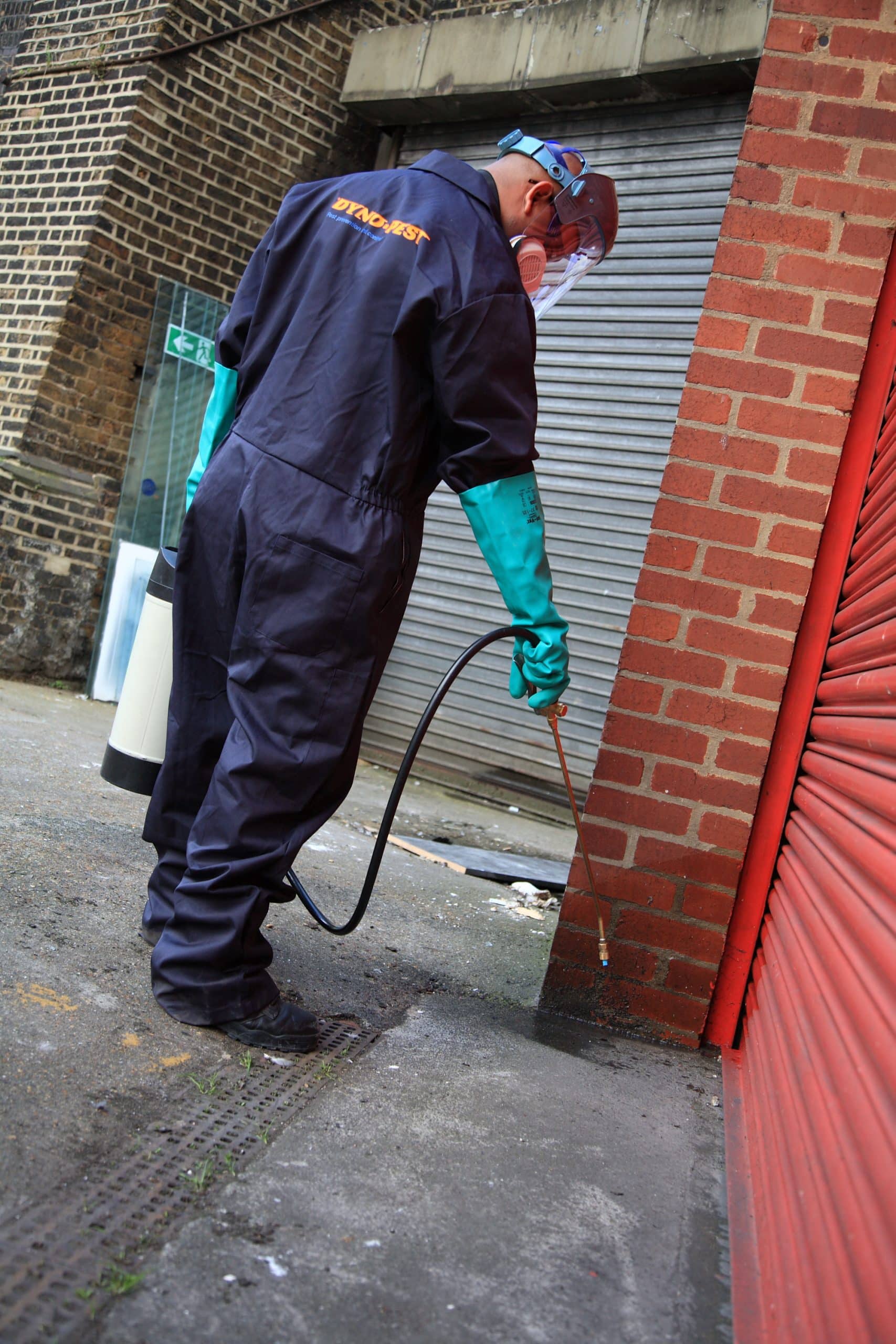LONDON PEST CONTROL AVAILABLE 24/7
LONDON PEST CONTROL AVAILABLE 24/7
Foxes are pests that can cause unforeseen damage to your business. The urban fox is a prevalent pest in London, with approximately 28 foxes per square mile and can cause unexpected damage to your business or home. They make their home on construction sites, with the mainstay of their diet being waste food from restaurants, takeaways, hotels, pubs, and food-processing units, with these organisations being increasingly targeted by foxes.
Early detection by professionally trained and experienced Dyno-Pest technicians plus a prompt, effective ongoing management regime is the effective way to treat pest foxes, whether they are an occasional or regular nuisance.
Call for qualified help at the first sighting of a fox on your premises or if you have evidence of a scavenging fox and are in need of fox control in London.



01
Fill out our free quote using our online quote builder
02
Once confirmed, we will arrange a time to visit you
03
Finally, we will remove the pest for you, leaving you pest-free!
Foxes can prove to be a substantial issue for businesses, particularly those in the food and construction sectors. These urban creatures have adapted to city life, becoming opportunistic feeders who often scavenge in bins near eateries, disturbing waste containment areas and potentially causing health hazards. In construction sites, foxes can wreak havoc by digging holes, potentially weakening structures and causing costly damages. Moreover, they can be a source of noise pollution, especially during their breeding season, possibly affecting the working environment.
Dyno-Pest offers an effective solution to these challenges. Their experienced technicians are adept at early detection of these pests, enabling quick action to prevent any substantial damage. Dyno-Pest offers a comprehensive management regime, providing regular checks and employing effective strategies to ensure your business premises remain pest-free. Their services extend beyond elimination, including advice on preventative measures, ensuring businesses can maintain a clean, safe, and fox-free environment.


 H SL2024-01-22Had rats in my maisonette due to a hole/leaky pipe in my neighbour's garden (which Mark identified). He was fantastic: not only getting rid of the rats as quickly and efficiently as possible, but giving me advice along the way that has been so helpful. Can't recommend him/them highly enough.
H SL2024-01-22Had rats in my maisonette due to a hole/leaky pipe in my neighbour's garden (which Mark identified). He was fantastic: not only getting rid of the rats as quickly and efficiently as possible, but giving me advice along the way that has been so helpful. Can't recommend him/them highly enough. alison craig2023-08-03Terrific service.Friendly, professional, and efficient.
alison craig2023-08-03Terrific service.Friendly, professional, and efficient. Wendy Pullinger2021-12-20Great professional service. Helpful advice and support. Highly recommend Mark.
Wendy Pullinger2021-12-20Great professional service. Helpful advice and support. Highly recommend Mark. Michelle Parkin2021-12-18I am extremely happy with Mark for his prompt response and professional service he provided me with regards to the mice issue we have. I highly recommend. Thank you
Michelle Parkin2021-12-18I am extremely happy with Mark for his prompt response and professional service he provided me with regards to the mice issue we have. I highly recommend. Thank you Hannah Jeffery2021-12-16I had a problem with pigeons nesting under my solar panels. They were very polite, informative, professional and was happy with the service from start to finish. Prevention measures installed to the solar panels, pigeons evicted and all areas cleaned. I could not be happier with service provided from Mark and Chris @ Dynopest.
Hannah Jeffery2021-12-16I had a problem with pigeons nesting under my solar panels. They were very polite, informative, professional and was happy with the service from start to finish. Prevention measures installed to the solar panels, pigeons evicted and all areas cleaned. I could not be happier with service provided from Mark and Chris @ Dynopest. Sarah Cawdron2021-12-15Great service from Marco the engineer. Always polite and extremely good at his job. Well done.
Sarah Cawdron2021-12-15Great service from Marco the engineer. Always polite and extremely good at his job. Well done.
Whilst it’s impossible to guarantee that Foxes will never impact your business, you can significantly reduce the risk with the Dyno-Pest ‘Power of 3’ protection program:
01
A qualified Dyno-Pest surveyor will undertake a thorough on-site inspection, and you will receive a report detailing findings, the proposed treatment, and fees.
02
The treatment used by Dyno-Pest can only be used by professional operatives with the appropriate application certification by DEFRA (The Department for Environment, Food and Rural Affairs).
03
Management treatment is recommended quarterly to prevent other Foxes from inhabiting the previously treated area. We will advise on the best management program in areas with a high density of Foxes.
The latest treatments for Foxes that are used by accredited Dyno-Pest technicians are cost-effective and safe, posing no threat to humans or animals. If it is necessary to cull a Fox, this will be carried out humanely by a qualified Dyno-Pest pest controller using approved and licensed techniques.
Because Foxes rely on their sense of smell, the dried deposits of the approved treatment emit a very unpleasant smell. Foxes associate this with the area and so move away. This aversion to the area persists even after the chemical has been washed away.


Due to their adaptability and food availability, foxes are now more common in some London areas than in the surrounding countryside.
Urban foxes can be a problem generally during mating season when the screaming and barking of the vixens can be distressing and often disturb sleep.
Foxes are also territorial and will scent mark their area with strong-smelling urine and faeces, especially if it is essential to them, such as near their “earth” (the burrow or den). In urban environments, foxes will often make their earth under sheds, in cellars, or in quiet, overgrown areas of your garden.
While they usually leave cats and dogs alone, foxes may be tempted by smaller pets such as rabbits, guinea pigs, and chickens if they are not adequately protected. If the animals are kept outside, the easiest way to ensure their safety is to line the bottom of their cage or hutch with chicken wire that the foxes cannot penetrate.
Foxes in London do carry some diseases (including toxoplasmosis in their faeces) and worms, though they don’t carry rabies or suffer from distemper, despite commonly held beliefs – Britain has been free of rabies for many years. They are known to suffer from Weil’s disease and Mange (which is a skin disease caused by parasitic mites) that can transfer to pets.
Should foxes be a problem in your area, careful regard must be taken to all relevant laws, health and safety legislation, etc. Poisons are not a legal or acceptable fox pest control solution and can be very dangerous if misused. While foxes are not a protected species as such, regulations surround the humane removal of these animals. At Dyno-Pest, our professional technicians are fully trained and aware of the relevant laws regarding fox removal and elimination of pests foxes.
